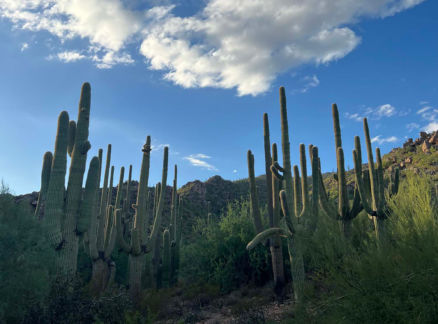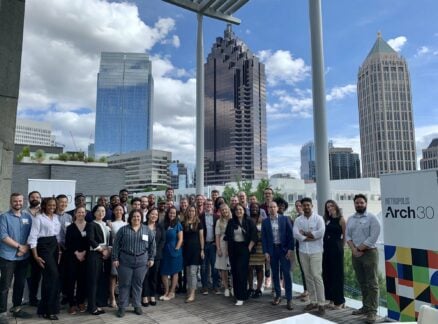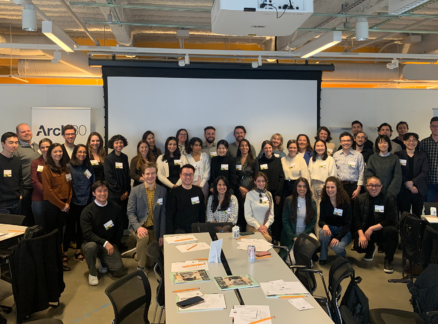December 1, 2012
Saint Louis Blues
Residents of the River City have nothing to feel inferior about.
On my first visit to St. Louis, I found myself thinking those people who abandoned America’s rust belt cities, either to move to the suburbs or the sun belt, had made a terrible mistake. The city’s population is now 318,000, a little more than a third of what it was at its peak in the 1950s. Walking past the handsome brick town houses on streets surrounding the still-bustling Soulard Farmers Market, I was amazed that, despite the damage done to St. Louis in the postwar years—almost every neighborhood I visited had been dismembered by one highway or another—it was still a lovely city.
St. Louis is not on anyone’s list of hot destinations. Almost the second I exited the airport terminal, I was informed that it suffers from an inferiority complex. The locals are sensitive about the fact that it’s not Chicago, or even Kansas City. To make matters worse, the city’s flagship manufacturer, Anheuser-Busch, was bought by a Belgian company, InBev, in 2008.
I was there to give a talk at the FORM Contemporary Design Show, the focal point of a young, burgeoning professional community. I wanted to understand the city before I spoke, so I got a few natives to show me the sights. First, Tom Niemeier, president of SPACE Architecture + Design, drove me around downtown and explained that St. Louis remains a largely segregated city, with the black population residing primarily in the north end of town and Delmar Boulevard the unofficial boundary. The highlight of his tour was his firm’s geothermally heated and cooled headquarters, a rehab of a historic building in the Grove neighborhood. From there I was picked up by Randy Vines of STL-Style, a T-shirt vendor and booster of all things St. Louis, the artist/designer Kara Holland, who likes to stage picnics in disused urban spaces—there are plenty—and Michael Allen, the city’s premier preservation historian. Allen led the tour.
He showed me some of the highlights of the wealthier white side of town, like the imposingly gated private streets—Westmoreland Place, Portland Place—that are peculiar to this city, but his focus was mostly on the north side, where neighborhoods of handsome brick homes have suffered from decades of disinvestment.
In St. Louis, I encountered a couple of examples of astonishing beauty. One is the landmark everybody knows: the Gateway Arch. Designed by Eero Saarinen, it’s an audacious piece of monument making, a bold statement of civic optimism completed in 1965. The arch, part of the Jefferson National Expansion Memorial, is supposed to celebrate our nation’s westward progress, but it was finished at the exact moment that the city began its decline, so it could also be read as a commemoration of our nation’s out-migration to the suburbs. The other dazzling object, also a symbol of confidence in the city’s future, is the Grand Avenue Water Tower, a nineteenth-century piece of infrastructure in the form of a 154-foot-tall Corinthian column standing in the middle of a north side street.
Saarinen’s arch is one of the city’s two major works of modernism. The other one no longer exists. The Pruitt-Igoe housing project, designed by Minoru Yamasaki and built as an antidote to overcrowded slums was, if you believe the recent documentary The Pruitt-Igoe Myth, a sort of paradise when the first tenants arrived in 1954. Former residents talk about the ample bedrooms, the Christmas lights, the views, and the sunlight. Mounting problems—the film primarily blames a lack of funding for routine maintenance—led to the near abandonment of the project fewer than two decades later. In 1972 several of the buildings were demolished. The famous footage of that implosion is variously seen to represent the failure of government, the hopelessness of public housing, or, as Charles Jencks would have it, the death of modernism. Sadly, it could be considered St. Louis’s most impactful contribution to world culture.
What shocked me about Allen’s grand tour—more than the sight of empty houses collapsing because brick thieves had undermined the walls—was the Pruitt-Igoe site. Today, most of it stands neglected. A scant three miles from the Gateway Arch, there is a scraggly forest where this landmark of best intentions gone awry once stood. The abandonment of this site strikes me as unthinkable, as if the World Trade Center site had been left a vacant lot. Stranger still, the city recently sold a two-year option to develop the site to Paul McKee, a local businessman who has been systematically accumulating land on the north side. They will sell him the site outright for another $900,000. A million dollars for 33 prime acres, arguably the most infamous piece of land in St. Louis.
McKee’s plan for a proposed NorthSide Regeneration project, a massive undertaking on some 1,500 acres (of which he currently controls more than 200), is remarkably vague. No one could explain what he was doing, aside from getting compensated for his land purchases by a peculiar piece of Missouri legislation called the Distressed Areas Land Assemblage Tax Credit Act. (Passed in 2007, allegedly to benefit only McKee, it allows him to be reimbursed with tax credits for his north side land purchases.) The developer is also getting paid to rebuild the area’s infrastructure with $390 million in tax increment financing (TIF) from the city’s budget. (A challenge to that funding has made its way to Missouri’s Supreme Court.) Beyond that, the description of his intentions on the project’s Web site is inscrutable and has a strange, L. Ron Hubbard–like flavor to it. The site describes the copyrighted ethos of McKee’s company, McEagle, as the “LifeWorks philosophy of Live, Learn, Work, Play and Pray.” It mentions that McEagle hired a company called The Right Brain People to “identify the motivations of individuals…to live and work in the City of St. Louis.” This is as detailed as the project description gets: “Regeneration of the NorthSide infrastructure, green space, transportation system, neighborhoods and economy. Four major business centers, new interstate connections, new green streets and parks, and twelve neighborhood centers form the integrated vision.”
The renderings and site plans are equally generic. So far, the only built evidence of the project is a small field office in a rehabbed truck depot. McKee has postponed work on the infrastructure until Missouri’s high court rules on his TIF money. William Laskowsky, McKee’s chief development officer, told me that the planning firms Civitas of Denver and Cole of St. Louis had been consulted, but “the whole plan was supposed to be as specific as it needed to be to build an economic model that would show the validity of the approach.” Which is to say, not very.
Meanwhile, outraged that a site as historically significant as Pruitt-Igoe’s was lying fallow, Allen and Nora Wendl, an architecture professor at Portland State University, organized a competition called Pruitt-Igoe Now. The winners were decidedly non-architectural. The first prize went to Harvard Graduate School of Design students Heather Dunbar and Xiaowei R. Wong for “St. Louis Ecological Production Line.” It envisioned farms and tree nurseries on the site. Other winners suggested using the land to produce all the ingredients to make ice cream; another proposed a “modern day commons and fairgrounds.”
While I applaud these efforts to shine a spotlight on the Pruitt-Igoe site, I’m sorry that most of the finalists have given up on the viability of St. Louis as an urban place. Residents here have nothing to feel inferior about. The component parts of a great city are still there.
St. Louis has a downtown that boasts an inventory of handsome old industrial buildings, perfect for loft living, and the city’s stock of nineteenth-century homes is tremendous. Parks are plentiful, and there’s a light-rail line that will get you to the airport. But most of all, there’s enough vacant or underused land to build just about anything, especially for a developer whose vision is more about bricks and mortar and less about harvesting tax credits. The Pruitt-Igoe site seems like the right place to erect a twenty-first century corrective to the bad old housing projects: multiracial, mixed-use, sensitively modern, and perfectly positioned to take advantage of the current reverse migration from the ‘burbs to the city, and—who knows?—from the ever hotter sun belt back to the increasingly temperate rust belt.





